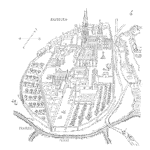
Last week during our CRE Test Prep class, we were covering the Basic Statistics section in the CRE Primer and had several questions regarding Confidence Limits for Reliability.
All of them were fair questions, and when students are asking these types of questions, the class gets better…
For those of you that have the CRE Primer recall question 3.40 in Section III Basic Statistical Concepts. The question asks for you to calculate the 90% confidence interval for reliability at 130 hours. They provide you with five items that underwent a test: 3 of them failed after 43, 57, and 80 hours, and the other two units survived the test at 100 hours without failing.
Since the items that did not fail were not removed from testing at the same time as the last failure, this is Time Censoring.
When I was explaining this exercise, we had a great conversation on the different types of Censoring:
- Non Censored Data: When units are tested to failure, either repairable or non-repairable (MTTF), the estimate of the MTBF (θ) is simply the ratio of total test time divided by the number of failures during the test.
- Type I Censoring or Time Censoring: A test is initiated with a number of items and is terminated after a predetermined time.
- Type II Censoring, Failure Censoring, or Truncation: Consider a test initiated with a number of items and terminated after a predetermined number of failures.
- Right Censoring: An item is censored on the right if the failure time is not known, but it is known that the item survived to a known time without failure.
- Left Censoring: If an item is known to be in a failed condition at a specific time, but the exact failure time is not known, this is left censoring.
After a good discussion, we returned to problem 3.40 of the CRE Primer and discussed what chi-square formula to use in this problem.
Since the test was not terminated due to a predetermined number if failures, this is an example of Time Censoring.
Where T represents the total test time for all items, both failed and un-failed, and r is the number of failed, a (1-α)% confidence limit for θ is:
$$ \large\displaystyle \frac{2T}{\chi _{\frac{\alpha }{2},\text{ }2r+2}^{2}}\le \theta \le \frac{2T}{\chi _{1-\frac{\alpha }{2},\text{ }2r}^{2}}$$
From the chi-square tables we get the following:
The critical value of the chi-square distribution with alpha = 0.05 and 8 degrees of freedom is 15.507
The critical value of the chi-square distribution with alpha = 0.95 and 6 degrees of freedom is 1.635
After plugging and chugging the numbers into the chi-square formula and the Exponential Reliability Function, we all concluded that answer was 0.0705 ≤ R ≤ 0.7560
This was a great exercise I am sure that you might see one like it on the CRE Test….
Related:
Censored Data and CDF Plotting Points (article)
Two Stones Question (article)
Hypothesis Testing (article)
 Ask a question or send along a comment.
Please login to view and use the contact form.
Ask a question or send along a comment.
Please login to view and use the contact form.
Leave a Reply